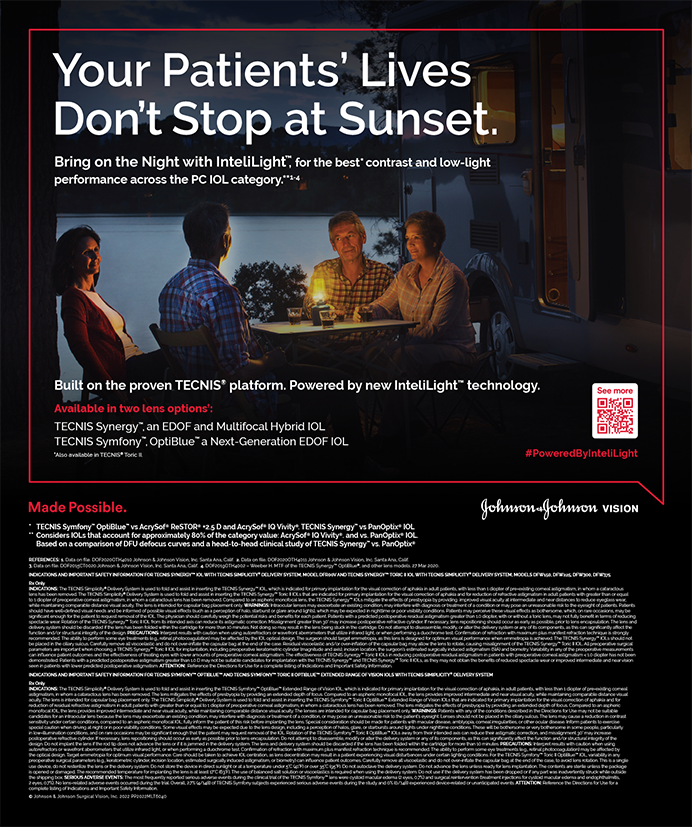You have held several positions in various ophthalmic organizations. How do you think ophthalmic meetings have changed over the past 20 to 30 years?
I believe the quality of ophthalmic meetings has improved dramatically over the past 20 years, especially in the information they provide and the skills of the speakers.
My major concern is what I perceive to be the increasing commercialization of our field. Too often, I feel that I can look at a program and anticipate the content of speakers' presentations based on their commercial affiliations. Some of the reasons for this development are laudable and indicate that industry recognizes the need for solid research and offers researchers the opportunity to do studies. My concern is that too few of us are performing the independent, comparative studies that are essential to advance clinical practice.
What is the current focus of your research?
I am interested in how IOL designs and wavefront-guided surgical correction affect visual quality. In the latter area, my colleagues and I are investigating the effect of centration and cyclorotation on vision and the application of wavefront-guided correction in eyes that have undergone prior procedures such as RK or IOL implantation.
What are the pros and cons of spheric versus aspheric IOLs?
Laboratory and clinical evidence suggest that aspheric IOLs can improve the quality of vision as measured by contrast sensitivity and simulated "real-life" situations such as night driving. Li Wang, MD, PhD, and I1 showed that aspheric IOLs should be placed within 0.3 to 0.4mm of the pupil's center to provide optimal vision. Further clinical studies are required to validate the impact of aspheric correction and the effect of decentration on visual quality.
Ultimately, I believe we will want to include a range of aspheric IOLs in our armamentarium that matches the asphericity of each patient's cornea. We will then want to optimize centration to provide the best quality of vision. One option would be to modify the position of implanted IOLs postoperatively, a strategy that Calhoun Vision, Inc., is investigating with its Light Adjustable Lens.
Physicians are increasingly concerned about intraoperative floppy iris syndrome. What tool do you find most useful for dealing with this problem during cataract surgery?
I have never needed to use iris hooks or similar devices to manage intraoperative floppy iris syndrome. For me, the key is the selection of proper ophthalmic viscoelastic surgical devices. My current technique combines Healon5 and Viscoat.
Initially, I inject Viscoat into the anterior chamber angle. Next, I inject Healon5 more centrally and posteriorly over the exposed lens and the exposed central two-thirds of the iris. In my experience, Healon5 mechanically dilates the floppy iris to create an adequately sized pupil. If the pupil constricts during phacoemulsification, I can dilate it again by injecting more Healon5.
Although you completed your fellowship in London, you have spent most of your career in Houston. What about the Lone Star State has kept you in the region for so long?
Texas is a stunningly beautiful state filled with little (and big) treasures. Houston is a cosmopolitan city, and the professional opportunities Baylor College of Medicine has offered to me have exceeded my expectations. The biggest reason, of course, is personal: family; friends; and the roots you develop by living in a place you enjoy.


